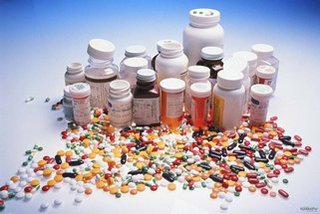The pulmonologist told how quickly the body recovers if you quit smoking
The preservation of the population of any state provides, among other things, the use of measures to reduce harm to the HEALTH of an individual. They are based on harm reduction - the concept of harm reduction - and do not provide for a strict (and impracticable) ban on health-damaging behavior, but for its gradual change to a safer one and a reduction in negative consequences. Basic principles:
observance of human rights;
· pragmatism;
humanism;
variety of medical approaches;
Continuous assessment of the prerequisites and features of the development of diseases.
According to Sergey Babak, Professor of the Department of Phthisiology and Pulmonology of the Medical Faculty of the Moscow State Medical University. A.I. Evdokimov, a physician of the highest category and vice president of the Association of Medical Specialists for Risk Modification, should shift the focus from the long-term goal of "completely eradicate disease" to shorter and more achievable goals. For example, to slow down the growth of the disease. The professor believes that the ability of the medical community to use different approaches in treatment can play an important role here.
– The basis of a medical risk management strategy should be: improving diagnostics and dispensary observation, continuous professional training of medical specialists, promotion of physical activity, motivation to reduce tobacco and ALCOHOL consumption.
NCDs account for 71% of deaths in the worldFor example, in RUSSIA, the Ministry of Health has developed a strategy through which the population will form a healthy lifestyle (up to 2025). it provides that the prevention and control of non-communicable diseases will be based on a healthy lifestyle. This refers to a lifestyle that is characterized by the elimination or reduction of smoking, excessive alcohol consumption, malnutrition, the development of physical activity and the ability to adaptively cope with stress.
NCDs are chronic non-communicable diseases that are not transmitted to other people. They have a long course and are caused, for example, by malnutrition, hereditary or other long-term diseases, allergies, or abnormalities in cell proliferation. At the same time, about 41 million people die from NCDs each year, 15 million of them between the ages of 30 and 69. This is 71% of deaths in the world. Main types of NCDs:
Cardiovascular (heart attack, stroke);
chronic respiratory diseases (bronchial asthma, COPD);
· diabetes;
malignant tumors.
When talking about risk factors that lead to respiratory diseases, pollutants are first of all mentioned (agents that enter the environment in quantities exceeding background values). First of all, tobacco smoke.
- We must not forget that in countries with low urbanization there is such a thing as biofuel. For example, in Kyrgyzstan, little girls helping their mothers to heat stoves with dung can get chronic obstructive pulmonary disease (COPD). It can arise from any factors that irritate the respiratory tract and act regularly. At gas stations, professional workers can also “earn” this disease in 2-5 years, the professor noted.
Why quitting smoking is beneficial?The first thing to do for COPD patients is to stop smoking if they have such a habit. According to Babak, if this is not possible for some reason, reducing the harmful effects is shown, for example, through switching to alternative means of delivering nicotine. Clinically quitting addiction is very "profitable":
2 weeks - blood flow improves.
3-9 months - shortness of breath and cough decrease.
12 months - the risk of developing coronary heart disease is halved.
5 years - the risk of stroke falls to the level of a healthy person.
10 years - The risk of developing lung cancer is halved.
At the same time, the DOCTOR believes that there are people who will never quit smoking, because they are seriously addicted. Reducing the destructive impact in this case is achieved by switching to products with reduced risk:
– When tobacco is burned, harmful tobacco fumes are formed, and when tobacco is heated, nicotine is evaporated without the formation of tobacco tar. Such smokeless smoking also does not harm those around you.
Medicines exist for many well-known diseases, but it is important to help the patient systematically heal the body in all possible ways. At the same time, it is impossible to achieve anything against the will of a person, therefore it is important for the doctor to find an approach to the patient and achieve his assistance.
– As part of the recently established Association of Medical Specialists for Risk Modification, we are planning to develop and implement strategies to prevent the further development of the disease and its complications. So that each medical specialist can have clear instructions on how to carry out serious targeted work, taking into account the risk factors identified in a particular patient, Babak said.
According to the professor, now many people with bad habits are simply ignored, the treatment is not individualized. Meanwhile, it is for such people that it is necessary to develop clinical recommendations for the modification and minimization of harmful factors.
| Prepared based on PMI materials, photo from open Internet sources.



























































